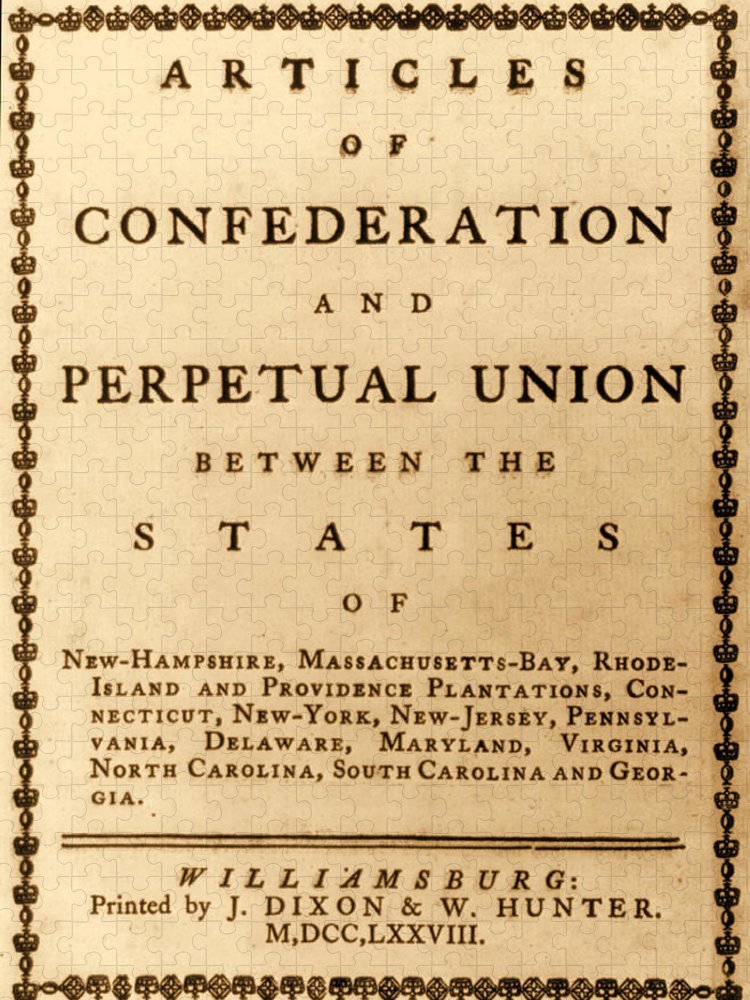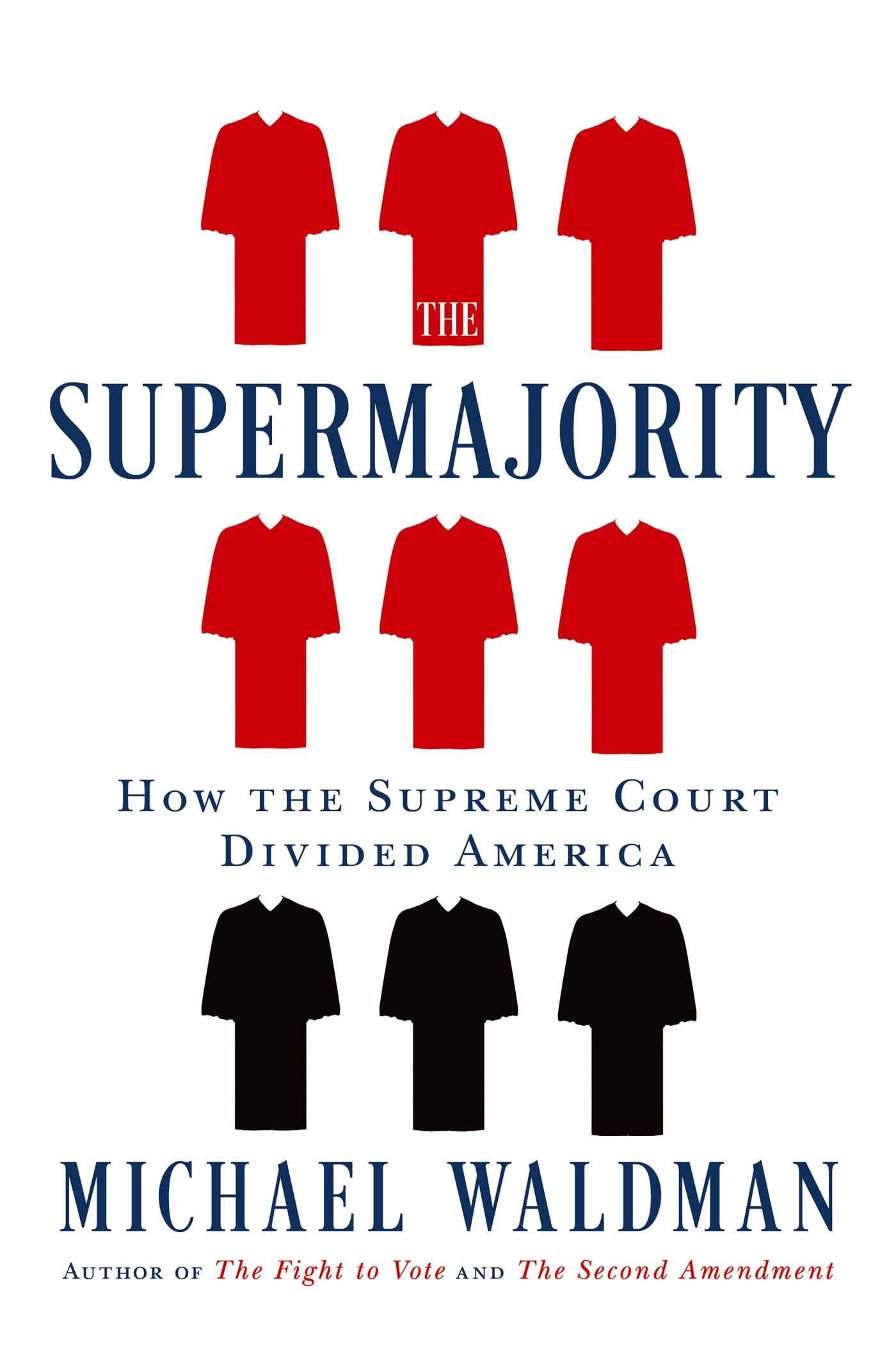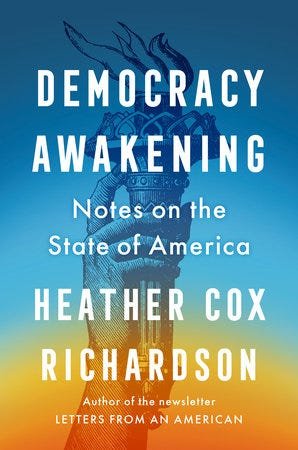Term Limits: The Good, The Bad, The History
May 2023 Imperfect Union
Last week I was invited to participate in a podcast episode on term limits. I’ll be sure to share the link when the episode is released, but I ended up doing a fair amount of research and thinking about the subject to prepare. It was a fantastic conversation, but I have so much additional material, I thought it might be helpful to provide an expanded historical primer given that the subject has been in the news a fair amount lately.
The original Constitution included no provisions for term limits for the legislature or executive but granted life tenure on good behavior to federal judges (including the Supreme Court). The 22nd Amendment, ratified on February 27, 1951, limits presidents to two full terms in office.
The crafting of the Constitution was done intentionally. The framers of the Constitution had lived with the Articles of Confederation, which had specified that “no person shall be capable of being a delegate for more than three years in any term of six years.” As a result, there was almost constant turnover of delegates in Congress and the legislature ground to a halt. Experts say it takes about a year to get fully comfortable with a new job, and congressmen regularly spent part of the year out of session. It’s not surprising that few congressmen acquired much institutional knowledge in the three short years before the term limits kicked in.
Similarly, the framers debated term limits for the executive, but they worried that limiting the terms would hamstring the president or allow Congress to dominate the executive in their final years in office. Likewise, they were concerned that judges would permit financial or political incentives to color their opinions if their tenure limited and they had to be concerned about what position came after they left office.
These choices initially posed little harm. Congress had regular turnover and most Supreme Court justices stayed on the bench an average of six to ten years. Both jobs required travel and extensive time away from home, offered low pay, and rendered the official vulnerable to criticism. Furthermore, justices had to ride circuit—meaning they had to ride either a horse or carriage across several states to convene court sessions in the far corners of their appointed district. It was miserable. The food was poor, the accommodations dirty and bug invested, and the travel dangerous. More than one justice was injured when his horse or carriage had an accident. Needless to say, the justices HATED it and weren’t keen on decades of that service.
Obviously, we no longer live in that world. Justices stay on the court for decades and age plays an important factor when a president nominates a new justice. Given the lengthy tenures and relative rarity of a vacancy, presidents frequently choose the youngest candidate they can find to maximize the value of the appointment.
The court also holds more power over the nation today than the framers could have possibly imagined. I can’t go back and ask, but I suspect they’d feel differently about term limits for justices if they could see how the court is evolved. One reason to think so? The United States is the only nation in the world—yes the only nation in the world—with a high court unrestricted by term or age limits.
Congress is a bit more nuanced. In the last several decades, many states have adopted term limits for their state legislatures, recognizing the changing nature of politics and the concentration of power in a few hands. Right now, 16 states limit the length of their legislative tenures.
Here are the arguments for term limits:
They reduce the concentration of power in a few legislative hands and the power of incumbency. As a result, there is a regular influx of new perspectives and fresh faces. Legislatures with term limits tend to younger overall. Perhaps no surprise, the current U.S. Congress is the oldest legislative body on average in democratic nations. Term limits prevent elderly legislators from remaining in office after they are no longer able to handle the demands of the job. Finally, some supporters of term limits argue that because legislators have less time in office, they focus more on getting things done, and less time playing up for television.
Here are the arguments against term limits:
Evidence suggests that term limits force legislators to rely heavily on staff and lobbyists, since they have less time to become experts themselves on their subjects. Because they have less time in office, legislators are more prone to jamming legislation through. Term limits technically limit the democratic nature of the vote because citizens can’t reelect a candidate after their terms have expired.
Finally, there are a lot of historic examples to suggest that term limits would have unintended consequences. For every senile legislator that term limits protect against, they would also block important bipartisan legislation and force out effective congressmen. Some of the most impactful bipartisan compromises and principled stands came from congressmen who had served lengthy tenures in Congress.
For example, John Quincy Adams represented the captured Africans aboard the Amistad after he had served in Congress for ten years. Three years later, he defeated the gag rule, which prevented discussion of slavery in the House of Representatives. The term limits currently in effect in sixteen states range from six to twelve years. Under these limits, JQA would have retired before he could accomplish this task.
John Quincy Adams in the House of Representatives. Image courtesy of House of Representatives.
Similarly, Daniel Webster and Henry Clay brokered their great compromises in Congress after lengthy tenures.
More recently, Sam Rayburn and Lyndon B. Johnson secured passage of the Civil Rights Act of 1957 because of their vast networks and banked favors, meticulously crafted over years of service. In 1957, Rayburn had been in the house for forty-three years. LBJ had been in the Senate for eight years, following twelve years in the House.
In the last fifty years, the biggest bipartisan legislation were brokered by longtime congressmen. The Endangered Species Act, passed in 1973, was spearheaded on the Democratic side by John Dingell. This bill passed eighteen years into his tenure. He served another 38 years.
In 1983, Senator Bob Dole (R) worked with Patrick Moynihan (D) to pass Social Security reform. Dole had been in office for fourteen years. Seven years later, he worked with Democratic partners to pass the Americans with Disabilities Act. At that point he had been in office for twenty-one years.
Why does that matter? In moments of partisan tension, negotiating bipartisan legislation can be risky. It can open members up to primary challenges and attacks from within their own party. Congressmen with lengthy tenures and established reputations acquire a certain untouchable stature and can take bigger risks. Sometimes we need bullet-proof congressmen to get stuff done.
Hypothetically, if we wanted to pass term limits, could we? For Congress, the process would be relatively straightforward. Congress would just have to pass a bill limiting themselves. So, maybe not so straightforward.
The Supreme Court is slightly more complicated. Because of the lifetime appointment clause in Article III of the Constitution, there are two options. First, a constitutional amendment eliminating this clause and either establishing limits or leaving the door open for Congress passing legislation. Second, I think reform is possible without a constitutional amendment. I believe I’ve described this plan previously on Imperfect Union, but in case you haven’t heard me talk about it or read about it, here’s how it would work:
Congress passes legislation creating 18-year terms for justices (or something like it), after which they would take “Senior” status. Right now, federal judges can take senior status after they are 65 years old and have served for 15 years on the federal bench, or any age + service time (over 10 years) = 80. As a senior judge, they have a reduced caseload and receive the same salary and benefits. For Supreme Court justices, they could adjudicate ethics questions for the justices (which is sorely missing), review certain appeals, or add additional votes if a justice recuses themselves from a case and there is a tie. They would retain their pay and benefits and thus would still technically be serving.
The proposal I favor would cycle a new justice on the court every two years and move the lengthiest tenured justice to senior status. I like this plan because it makes very clear the stakes of the election, i.e. that the Supreme Court and the president are completely intertwined, and takes the gamesmanship out of the timing. Alas, I’m pretty sure there isn’t congressional support for this legislation at the moment. But give it time.
One other alternative proposal is age limits, which would accomplish something similar but not exactly the same. But here too, I can think of lots of historic examples where age had produced wisdom and efficacy. For example, Nancy Pelosi was one of the most accomplished and effective Speakers of the House in U.S. history. Please note, I’m not actually making a value judgment about her policies. You can hate her politics, but you’d have to blind or just absurdly obstinate to deny her power to control her caucus. She’s not alone. Sometimes age just helps. I also worry that age would work disproportionately against women because women often pursue second careers after they have raised children. But it’s at least worth discussing.
All the arguments I listed above, both for and against term limits, are focused on legislatures. Frankly, I don’t find any of the arguments against term limits for the judiciary particularly compelling and most executives have some sort of limit already. But when it comes to Congress, I’m genuinely torn.
I want congressmen to have lengthy tenures, build areas of expertise, and serve their constituents. And yet, I don’t know that they can be trusted to do the right thing.
I’m absolutely furious at Dianne Feinstein for not resigning. California is one of the biggest states, with a huge economy, diverse interests and people, and it deserves two functioning senators. Again, like her or not, she was a legend and paved the way for women after her. But part of paving the way is knowing when to step aside and help out other behind you. At this point, I’m not sure she knows what is going on, so shame on her family and staff for facilitating this embarrassment. I know they wanted her to resign on her own terms, but at this point she is tearing down her legacy and writing the first line of her biography.
If Dianne Feinstein won’t resign, when it has zero impact on the party composition of the Senate, then how can we possibly expect anyone else to do so?
What are your thoughts? Are you for or against term limits? What are some alternatives? I’m eager to hear your thoughts.
Books:
I thought it might be fun to start a new little section after every essay. I get lots of requests for reading recommendations and I always have my eye on what’s coming down the road. So each month, I’ll share four books: what I’m currently reading (or listening to), what’s next on my list, a coming soon publication, and a book on the horizon that captured my attention. Here’s my inaugural list:
Currently Reading: The Gatekeepers by Chris Whipple. Long overdue to read this one!
Up Next: The Shadow Docket by Stephen Vladeck will be published tomorrow! For fans of Steve’s One First Substack will want to check this out.
Coming Soon: The Supermajority by Michael Waldman. Clearly I’m on a bit of a Supreme Court kick right now. Coming June 6, 2023!
On the Horizon: Democracy Awakening by Heather Cox Richardson will be out September 26, 2023. I’m predicting instant NYT bestseller. I’m sure many of you subscribe to Letters from an American, be sure to buy the book too.
What are you currently reading? What books are you anticipating?






